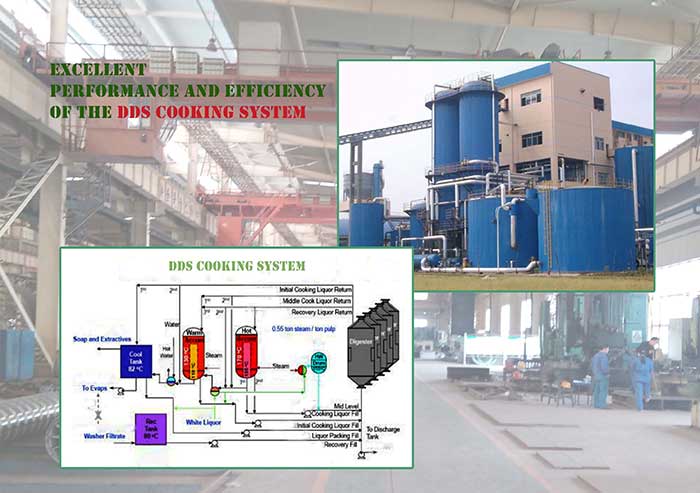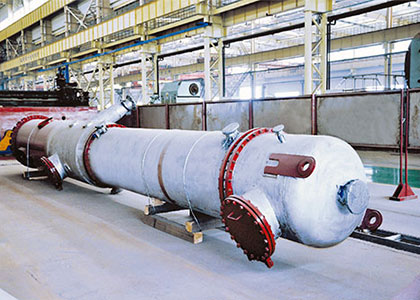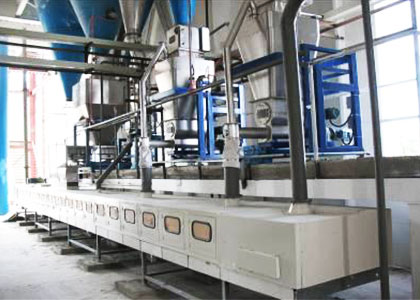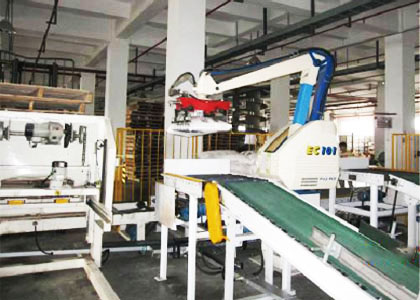The Displacement Digester System(DDS Cooking System and Technology)
The Kraft cooking technology has achieved continuously progress in the competition of batch cooking and continuous cooking. In the 1980s, the major technology breakthrough of batch cooking system and continuous cooking system reflects that the cooking technologies of low energy consumption and extended delignification are widely used.

After the improvement of the cooking technology, new steam consumption is around 1/3 as much as traditional consumption. Especially, the DDS (Displacement Digester System) cooking technology is upgraded on the basis of the RDH cooking technology, its consumption is much lower than that of the traditional cooking technology. Its kappa value has also reduced by a lot. The corresponding pollution load is much smaller. These are completely adapted to national environmental protection policy and low-carbon production concept.
The DDS cooking technology is a typical representative of batch displacement cooking system.
Through the complete DDS process, with accurate calculation and practical application, DDS can provide the best groove design coefficient, the maximum heat recovery and cooking process of chemicals. If the groove design coefficient is too small, we cannot achieve full energy saving and uniform quality of products. On the contrary, it will cause too much investment waste. This is the most distinctive feature of DDS batch cooking system.
DDS Cooking Technology
Loading Chips (LC): DDS cooking cycle begins here. Using 95℃ of cold black and cold white liquids for chifilling is to improve the dispersibility and the chifilling amount, and finish acid secretion of the chip surface. In the phase of LC, unlike steam chifilling, it doesn’t need fresh steam to make the chips at the temperature reach above 80℃ in the steam digester. The.LC helps the digester’s entering the state of pressure to finish the preparation.
Initial Cooking (IC): to fill with 135℃ warm black liquor and cold white liquid, and make cold liquid in the process of the LC be displaced out. With 135 warm black liquid filling, the pressure and temperature of the digester rise. Through a long-term cooking practice, the backbone of lignin will be loosed at 135℃of low temperature cooking phase in the DDS cooking process, meanwhile a large number of lignin features can be removed. For DDS cooking, the outside tank of 135℃of warm black liquid is pertinently set to displace cold black liquor in the digester and achieve the aim of the bulk delignification at low temperature status.
Middle Cooking (MC): to fill with 170℃of hot black liquor and hot white liquid to replace the initial cooking black liquor. As the temperature increases, the delignification continues.
Final Cooking (temperature rising/keeping) (FC): During temperature rising period, to make the temperature up to the highest point by steam and maintain it for an appropriate time. During the FC period, to continue to cook the liquor in the digester and determine the FC time by H- factor. Because the alkali consumption is 1/3 as much as that of traditional cooking during the FC period, this forms high temperature and low alkali concentration and gets high pulp yield, better strength. The recycle filtering plate can be used to play the anti-washing effects on cooking top part through the cocycle to ensure the normal operation of the whole system.
Heat Recycle (RC): to displace hot black liquor with washing filtrate. According to different temperatures, hot black liquor and warm black liquid will respectively be stored in tank areas and reused in the cooking operations. The digester is cooled down to the flash temperature. RC function is just like a section of pulp washing machine. After the RC, the pulp and materials in the digester no longer play delignification and other reactions. The digester is now equivalent to a pulp storage tower.
Discharging Cooking (DC): It is the end phase of cooking operation. Discharging is designed by DDS pump, which successfully solves the non-cleaning problem other displacement cooking systems exist. It can make the digester cool down to 98℃ to effectively avoid spraying the irritant gas produced by the traditional cooking system.
Higher Heat Utilization Efficiency of DDS Cooking System
DDS cooking system adopts a pump to send chemical liquid into the woodchips layer of the digester and then the woodchips have the initial temperature. The chemical liquid sent by pump takes the heat exchange through the digester and woodchips until the temperature reaches close or up to boiling point. The process is divided into IC and MC operations in two stages. If necessary, new operations that continue to heat up and cook by steam can be added after the MC operations until the preset target H factor reaches.
DDS cooking technology adopts the up-flowing displacement method. This means that liquid inflows from the bottom and is recycled from the top to achieve the exchange of energy and chemicals. Under the gravity function of the woodchips and the liquid in the digester, like a liquid piston, the chemical liquid will take steady upward displacement. The time of woodchips contacting with the liquid must be controlled, which can play the effects of first in first out, last in last out. And the cooking working condition is the same for top, middle and bottom of the digester.





